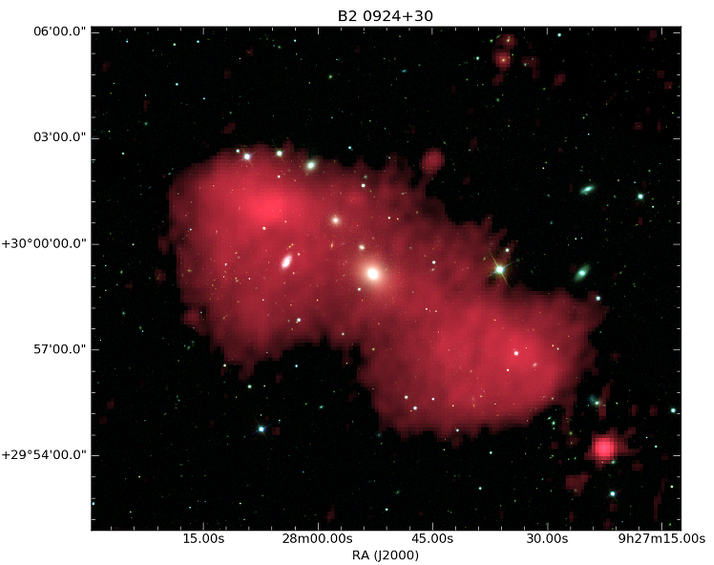Daily Image
01-02-2017Zooming in on an old AGN remnant with LOFAR
| Submitter: | Aleksandar Shulevski |
| Description: | One of the science cases for LOFAR is discovery and characterization of radio remnants of active galactic nuclei (AGN) - leftovers from past activity episodes. They are a key radio tracer of the total energy deposited in the (inter) galactic medium over cosmic time. As such, they provide key information about the feedback processes responsible for regulating galaxy (and super-massive black hole) growth over time. Also, remnants give us an insight into the AGN life-cycle. We investigated the prototypical AGN relic, B2 0924+30, to ascertain its activity history. LOFAR has fulfilled its potential, providing sensitive images at low frequencies which show the remnant lobes in their entirety. This data set, together with higher frequency data, has enabled the derivation of detailed age maps, helping to constrain the source history and energetics. We found that the oldest source regions are located around the host galaxy and are around 150 Myr old. The brightest and youngest regions are found within the twin lobes located on opposite sides of the AGN host galaxy and are around 40 Myr old, suggesting that that is the epoch when the activity in the lobes ceased. The overall source morphology suggests that this is a Fanaroff-Riley type II (FRII) remnant, in which case the youngest regions we see can represent the remnant hotspots. More such remnants are awaiting discovery in the era of the LOFAR syrveys such as the LOFAR Two meter Sky Survey (LoTSS) which is under way. Exciting times ahead! More in: A. Shulevski, R. Morganti, J .J. Harwood, P.D Barthel, M. Jamrozy, M.Brienza et al., Radiative age mapping of the remnant radio galaxy B2 0924+30: the LOFAR perspective, 2017, A&A (arXiv:1701.06903) |
| Copyright: | Aleksandar Shulevski, Raffaella Morganti et al. |
| Tweet |  |
